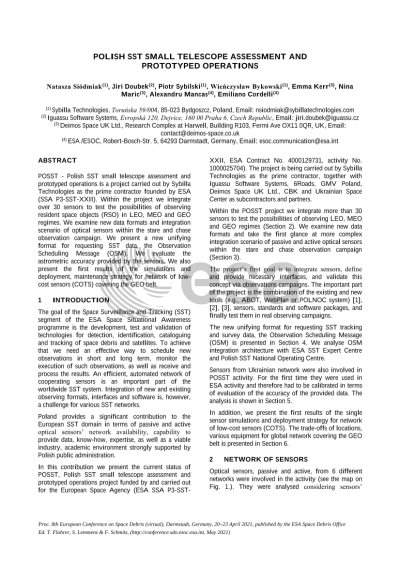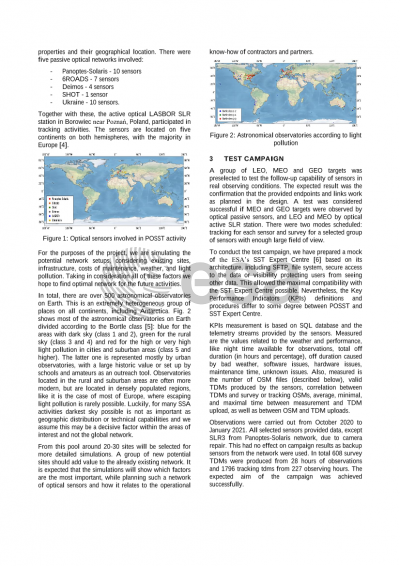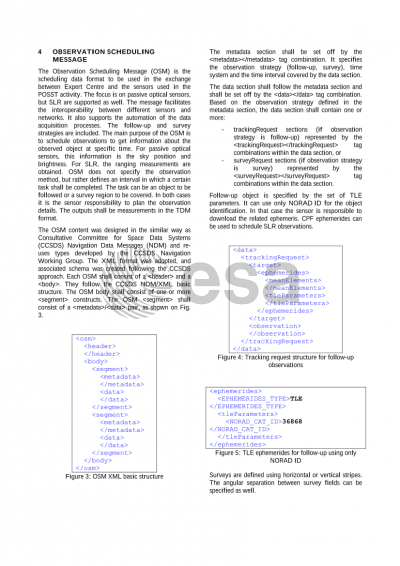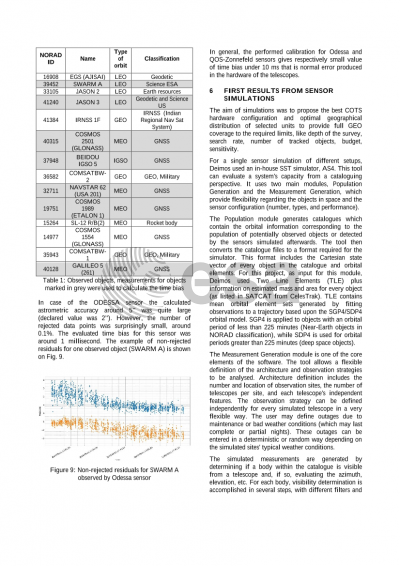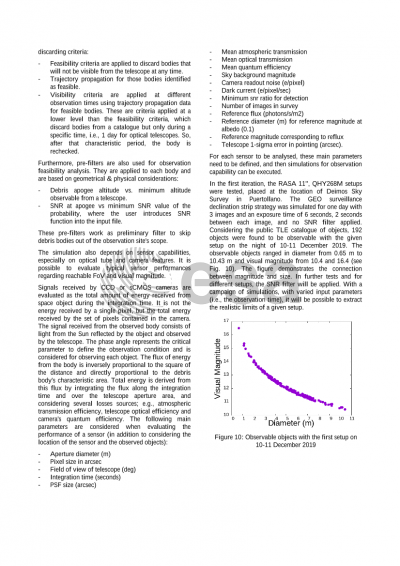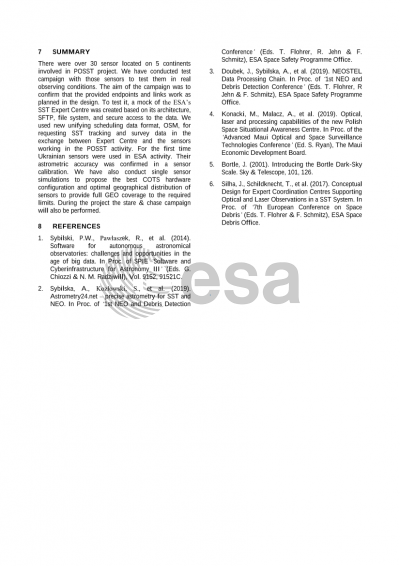Document details

Abstract
The goal of the Space Surveillance and Tracking (SST) segment of the ESA Space Situational Awareness programme is the development, test and validation of technologies for detection, identification, cataloguing and tracking of space debris and satellites. To achieve that we need an effective way to schedule new observations in short and long term, monitor the execution of such observations, as well as receive and process the results. An efficient, automated network of cooperating sensors is an important part of the worldwide SST system. Integration of new and existing observing formats, interfaces and software is, however, a challenge for various SST networks.
Poland provides a significant contribution to the European SST domain in terms of passive and active optical sensors’ network availability, capability to provide data, know-how, expertise, as well as a viable industry, academic environment strongly supported by Polish public administration.
In this contribution we present the current status of POSST, Polish SST small telescope assessment and prototyped operations project funded by and carried out for the European Space Agency (ESA). The project is being carried out by Sybilla Technologies as the prime contractor, together with Iguassu Software Systems, 6Roads, GMV Poland, Deimos Space UK Ltd., CBK and Ukrainian Space Center as subcontractors and partners.
Within the POSST project we integrate more than 30 sensors to test the possibilities of observing LEO, MEO and GEO regimes. We examine new data formats and take the first glance at more complex integration scenario of passive and active optical sensors within the stare and chase observation campaign.
The project’s first goal is to integrate sensors, define and provide necessary interfaces, and validate this concept via observations campaigns. The important part of the project is the combination of the existing and new tools (e.g. ABOT, WebPlan or POLNOC system), sensors, standards and software packages, and finally test them in real observing campaigns.
We present a new unifying format for requesting SST tracking and survey data, the Observation Scheduling Message (OSM). We analyse OSM integration architecture with ESA SST Expert Centre and Polish SST National Operating Centre.
In addition, we present the first results of the simulations and deployment, maintenance strategy for network of low cost sensors (COTS) covering the GEO belt. The trade-offs of locations, various equipment, and observing strategies with the prioritized requirements for reliability, coverage, and sensitivity will be presented.
Preview
